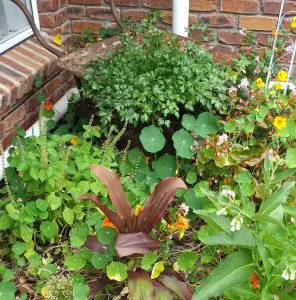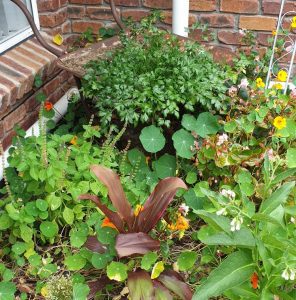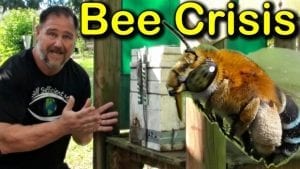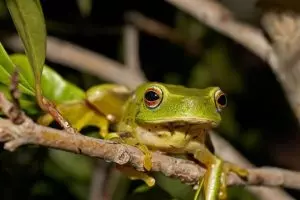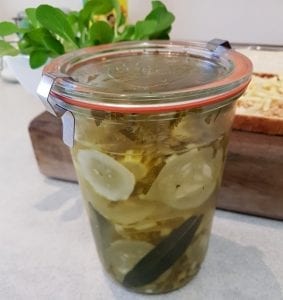WHY ARE EARTHWORMS SUCH A BIG DEAL FOR GARDENERS?
Earthworms are the largest & most productive part of the plant-food cycle: they can work harder and faster than any other organism, and produce a huge amount of nutrients for the plants. To see exactly how they work within the soil structure, read our article here which details the plant-food cycle. They’re basically a barometer of your soils health and an indicator of plant productivity. If the worm count is low, then soil fertility is low…and that means your vegetable garden won’t get the great results you want.
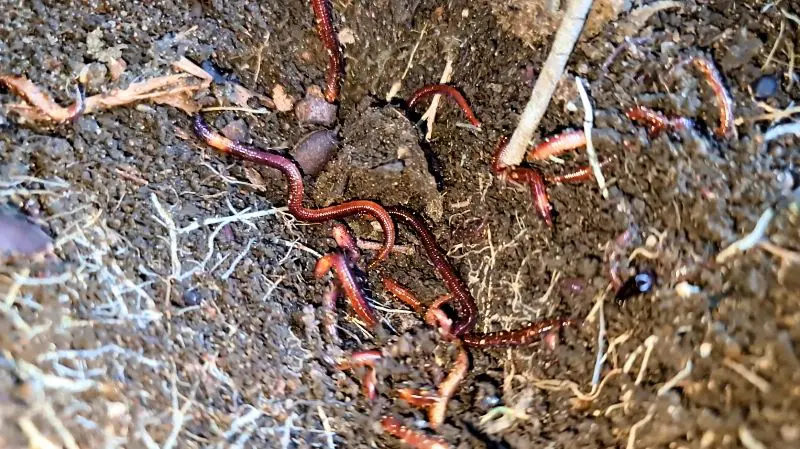
But what do they do, exactly? Earthworms are a bit like miniature fertiliser factories. Without them, your soil will be low on vital minerals like calcium, magnesium, potassium, phosphorous and nitrogen, because these are all manufactured by the gut of the earthworm. As they wriggle throughout the soil and eat, they make a tunnel which they line with their castings (aka poop). The castings are full of microbes and minerals that keep the rest of the food cycle pumping. Additionally, all those worm tunnels allow oxygen to enter the soil, so the worms are effectively ploughing, aerating and fertilising the soil for you. For more info on soil minerals, click here to read our detailed article.
How many earthworms do I need & how do I get more? If you took a shovel-full of soil from your garden, you should ideally count 25 earthworms in it. If you don’t have that many, there are a few ways to increase your earthworm numbers. Firstly, provide a ‘safe zone’ for them to come out at night. If the conditions suit them, they will come out and feed at the surface. Do this by providing a layer of moist organic mulch on top of your soil. Mulch (such as lucerne & sugar cane) breaks down with time and earthworms love to eat it. Keeping the mulch moist gives it a good connection to the soil below, and hence an easy pathway for the worms to follow up and eat it. Watch our video, below, to learn all about mulching and its benefits.
Reduce digging and tilling-Follow the principles of no-dig gardening; if you want to attract a critter, the worst thing you can do is destroy its habitat. Finally, provide food for them, by adding compost, microbes and fertilisers to your garden.
MAKE LUCERNE TEA TO ATTRACT MORE EARTHWORMS
Lucerne tea is a general tonic for fruiting plants which boosts the earthworm population, but what makes it really special is its ability to bind nitrogen. It should perhaps be called ‘protozoa tea’, as this fermented blend of lucerne, fish emulsion and molasses is full of beneficial microbes called protozoa. The protozoa are a favourite food of earthworms, so increasing the protozoa population will naturally increase the earthworm population.
To make lucerne tea, simply brew some green lucerne hay (pre-soaked in water), add fish emulsion and molasses, then feed it oxygen via a small aerator pump, like the ones you see in fish tanks.
For home use, you can make lucerne tea in a 20-100 litre (5-25 gallon) garbage bin. Make sure all your equipment is sterile before use. Flush your brewing tank and airlines with hydrogen peroxide or a chlorine solution to ensure that no unwanted bacteria remains. Soak the hay in the same solution before use.
Add 2 or 3 handfuls of fresh organic lucerne hay per 50 litres (13 gallons) of water. It is important that the lucerne is untreated and chemical-free so you don’t get the wrong kind of bacteria in the tea. Then add a large dash each of fish emulsion and molasses, and keep the aerator running for 48 hours. The finer the air bubbles, the more the protozoa will grow. Brewing for less time is possible if you’re in a hurry, but 48 hours gives the protozoa time to grow to full size & fulfil their role within the plant food cycle.
If using ground- or bore water, it’s a good idea to chlorinate the water before adding the hay. Make a solution as you would for a swimming pool, then start the pump. Run it for an hour or so, or until you can no longer smell the chlorine.

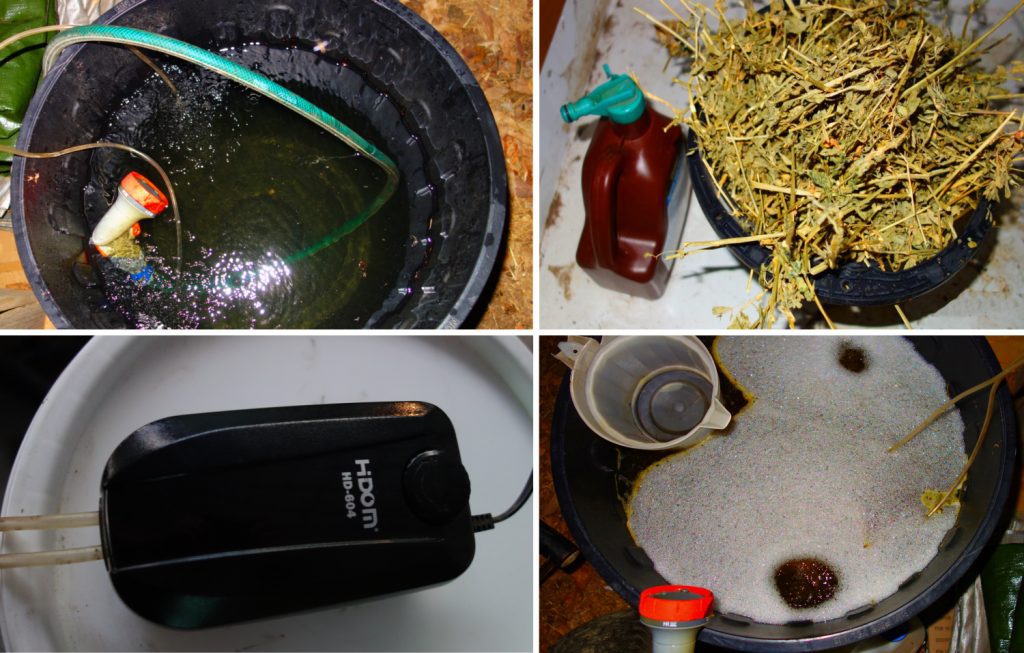
Top left; aerating chlorinated water for an hour before adding ingredients
Top right; ingredients- seaweed & fish solution, lucerne
Bottom left; air pump
Bottom right; the brew after 2 days- almost ready to use. You can leave it brewing with the pump running for a few more days if you can’t use it immediately.
To apply, dilute the lucerne tea at a ratio of 10:1 and use sparingly every two weeks. The tea can be added to irrigation water or as a soil drench on bare earth. This, together with mulching, fertilising and no-dig gardening, will certainly help you attract more earthworms to your garden and improve your gardens productivity!

